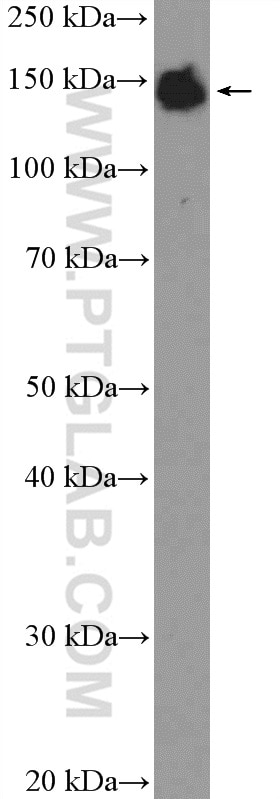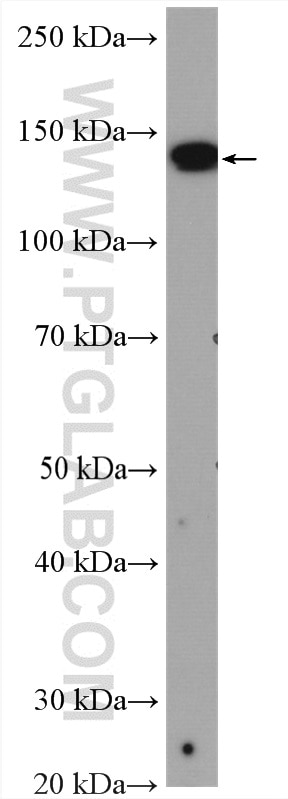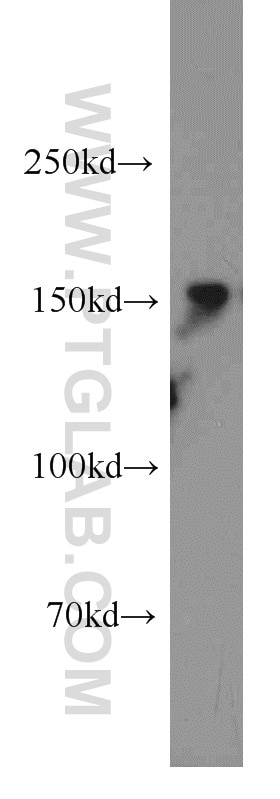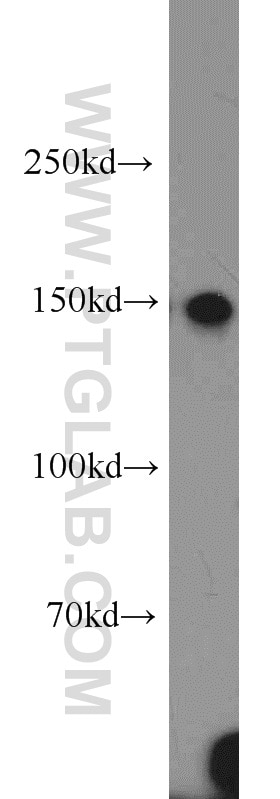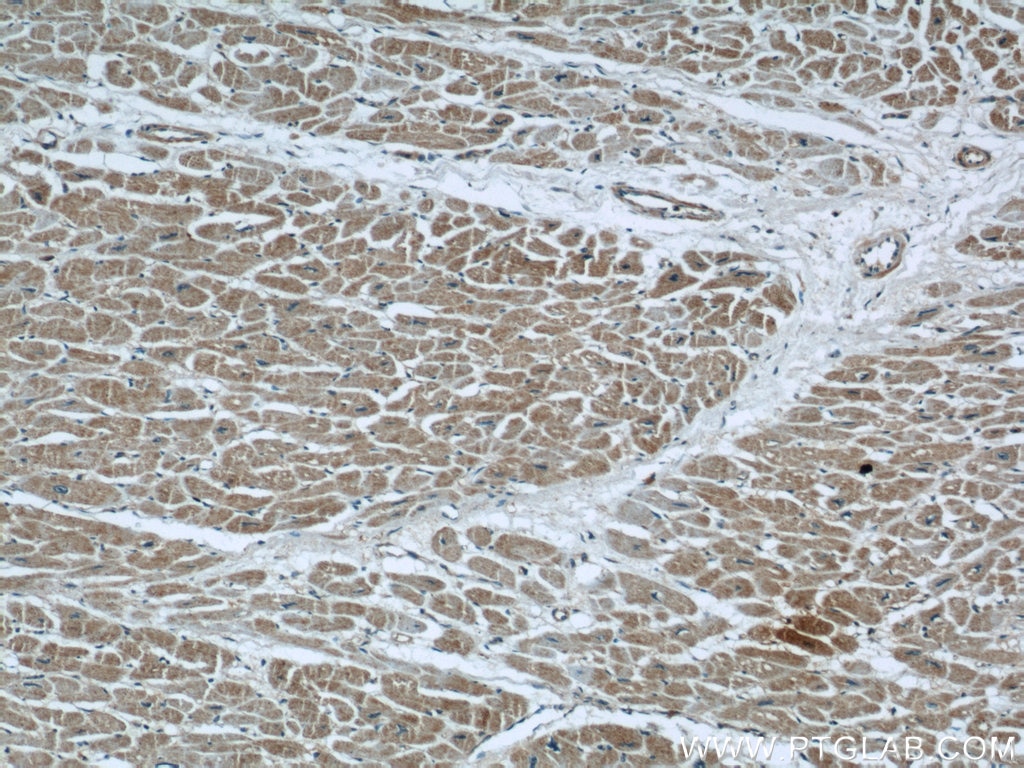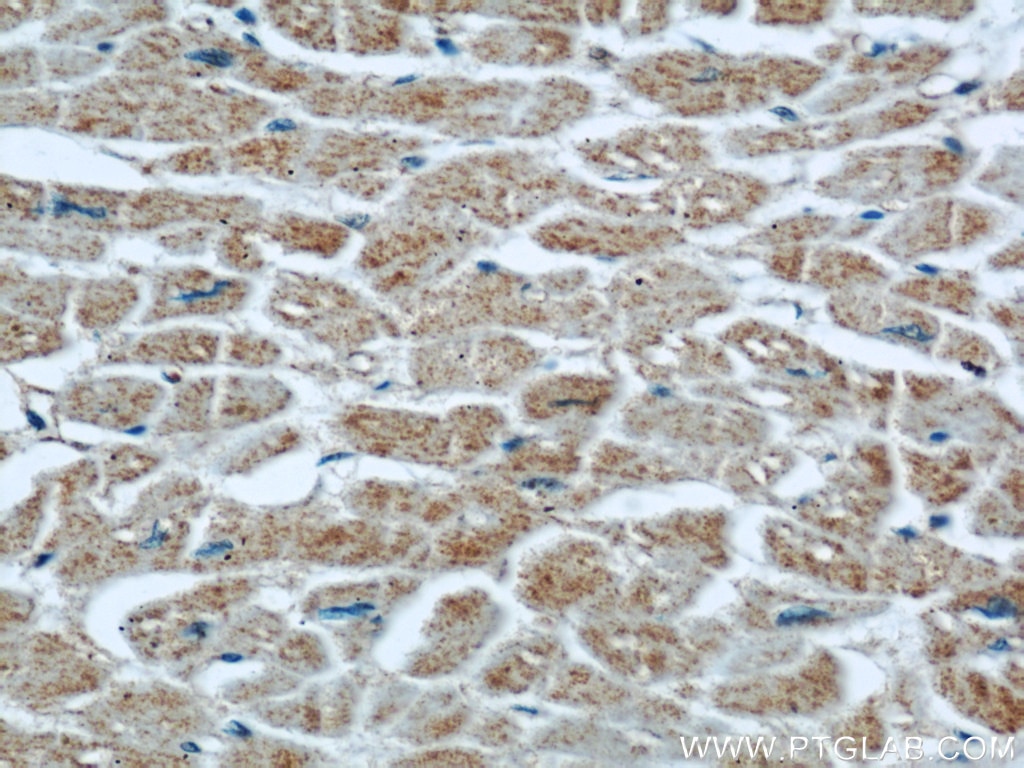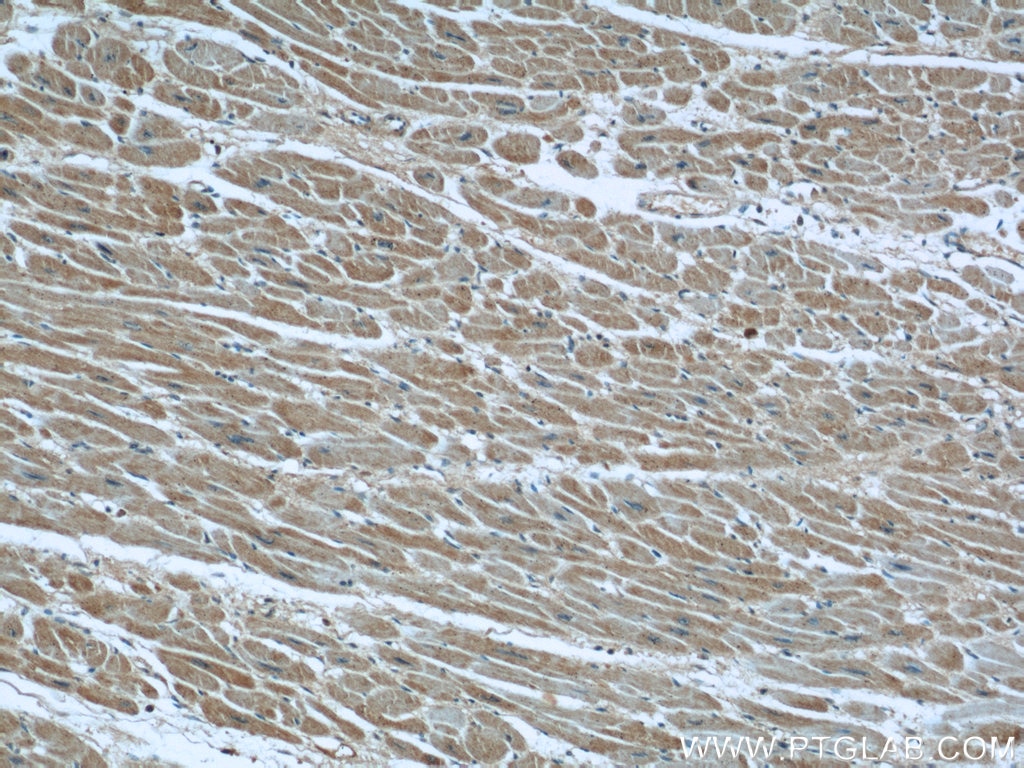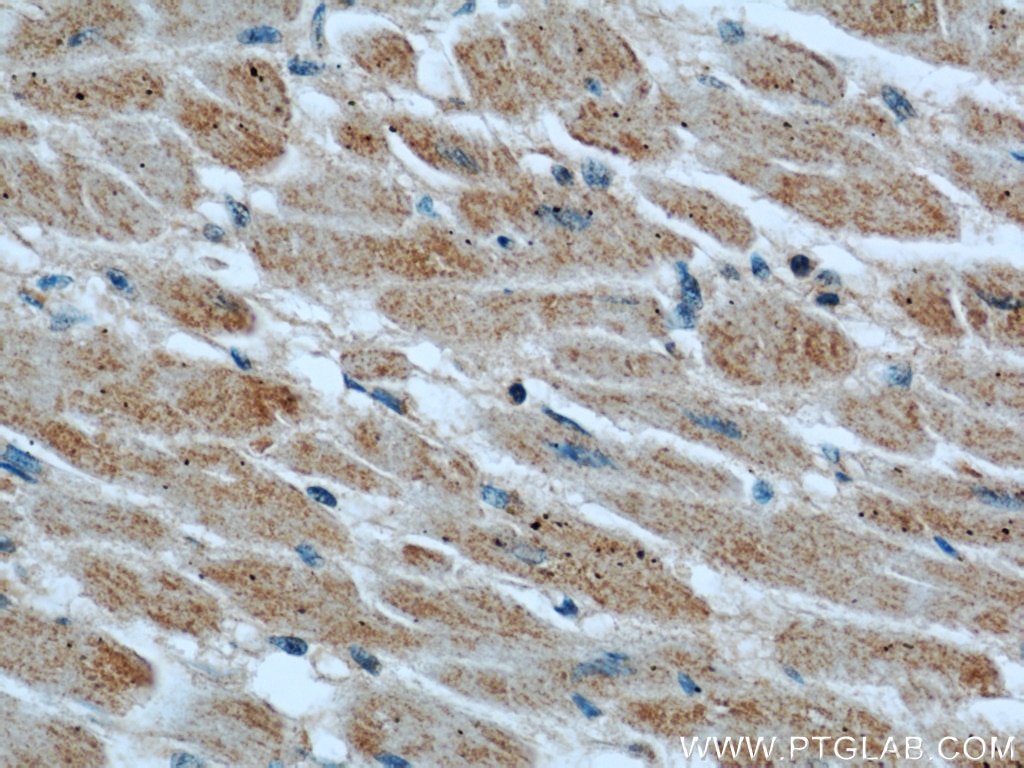- Phare
- Validé par KD/KO
Anticorps Polyclonal de lapin anti-XDH
XDH Polyclonal Antibody for WB, IHC, ELISA
Hôte / Isotype
Lapin / IgG
Réactivité testée
Humain, rat, souris et plus (3)
Applications
WB, IHC, IF, ELISA
Conjugaison
Non conjugué
N° de cat : 55156-1-AP
Synonymes
Galerie de données de validation
Applications testées
| Résultats positifs en WB | tissu hépatique de souris, tissu hépatique de rat |
| Résultats positifs en IHC | tissu cardiaque humain, il est suggéré de démasquer l'antigène avec un tampon de TE buffer pH 9.0; (*) À défaut, 'le démasquage de l'antigène peut être 'effectué avec un tampon citrate pH 6,0. |
Dilution recommandée
| Application | Dilution |
|---|---|
| Western Blot (WB) | WB : 1:500-1:2000 |
| Immunohistochimie (IHC) | IHC : 1:50-1:500 |
| It is recommended that this reagent should be titrated in each testing system to obtain optimal results. | |
| Sample-dependent, check data in validation data gallery | |
Applications publiées
| KD/KO | See 1 publications below |
| WB | See 25 publications below |
| IF | See 1 publications below |
Informations sur le produit
55156-1-AP cible XDH dans les applications de WB, IHC, IF, ELISA et montre une réactivité avec des échantillons Humain, rat, souris
| Réactivité | Humain, rat, souris |
| Réactivité citée | rat, bovin, Humain, poisson-zèbre, poulet, souris |
| Hôte / Isotype | Lapin / IgG |
| Clonalité | Polyclonal |
| Type | Anticorps |
| Immunogène | Peptide |
| Nom complet | xanthine dehydrogenase |
| Masse moléculaire calculée | 146 kDa |
| Poids moléculaire observé | 147-150 kDa |
| Numéro d’acquisition GenBank | NM_000379 |
| Symbole du gène | XDH |
| Identification du gène (NCBI) | 7498 |
| Conjugaison | Non conjugué |
| Forme | Liquide |
| Méthode de purification | Purification par affinité contre l'antigène |
| Tampon de stockage | PBS with 0.02% sodium azide and 50% glycerol |
| Conditions de stockage | Stocker à -20°C. Stable pendant un an après l'expédition. L'aliquotage n'est pas nécessaire pour le stockage à -20oC Les 20ul contiennent 0,1% de BSA. |
Informations générales
XDH, also named as XDHA, XO and XD, belongs to the xanthine dehydrogenase family. It catalyzes the last two steps of purine catabolism in man, formation of the end product uric acid from hypoxanthine and xanthine. The mammalian enzyme is synthesized as a dehydrogenase (XDH), which uses NAD as the electron acceptor, but it can be converted into an oxidase (XO) both in vivo and in vitro.This gene encodes a protein of 150 kDa and the 150 kDa polypeptide can be processed into a fragment of 130 kDa and further to 85 kDa by spontaneous proteolytic cleavage(PMID:9989587). In addition, the full length polypeptide can be also partially processed into a 87 kDa and 59 kDa fragments(PMID:21528298). It also can exsit as a homodimer(PMID:9989587). This antibody is specific to XDH.
Protocole
| Product Specific Protocols | |
|---|---|
| WB protocol for XDH antibody 55156-1-AP | Download protocol |
| IHC protocol for XDH antibody 55156-1-AP | Download protocol |
| Standard Protocols | |
|---|---|
| Click here to view our Standard Protocols |
Publications
| Species | Application | Title |
|---|---|---|
Int J Mol Sci Multiple-Purpose Connectivity Map Analysis Reveals the Benefits of Esculetin to Hyperuricemia and Renal Fibrosis. | ||
Free Radic Biol Med PPARα agonist WY-14,643 enhances ethanol metabolism in mice: role of catalase. | ||
Nutrients Chinese Sumac (Rhus chinensis Mill.) Fruits Prevent Hyperuricemia and Uric Acid Nephropathy in Mice Fed a High-Purine Yeast Diet | ||
Biochem Pharmacol PPARα agonist WY-14,643 induces adipose atrophy and fails to blunt chronic ethanol-induced hepatic fat accumulation in mice lacking adipose FGFR1. | ||
Sci Rep Iron regulatory protein deficiency compromises mitochondrial function in murine embryonic fibroblasts. | ||
Poult Sci Effects of Smilax China L. extracts on Hyperuricemia chicken model via inhibiting xanthine oxidase activity |
